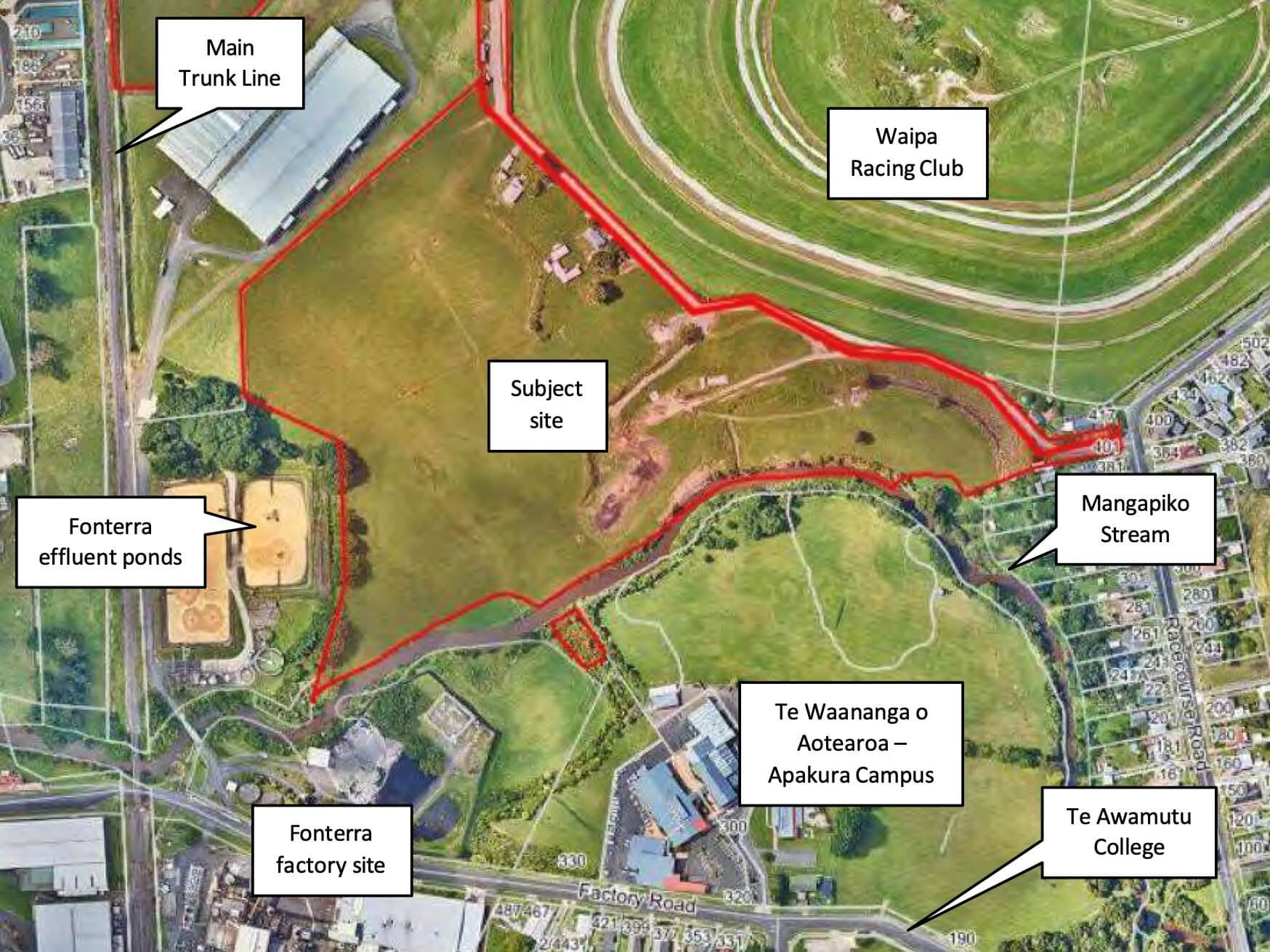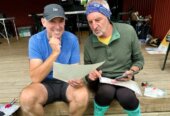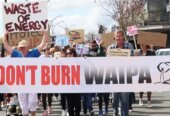The human health risk assessment completed for the Paewira Waste to Energy Plant contains contradictory and selective data and should raise alarm bells, according to a general practitioner opposed to the plant.

An aerial view of Paewira’s proposed ‘footprint’ in Racecourse Rd. Photo: Supplied.
Dr Crispin Langston, former occupational medicine advisor to the British Army’s Catterick Garrison, said a report from Sydney based Environmental Risk Sciences noted hospital admissions for childhood asthma in the Waikato region exceed the national average while a recent Health and Air Pollution in New Zealand study recognised oxides of nitrogen as an especial risk for childhood asthma.
Langston said the applicant Global Contracting Solutions’ submitted report stated that there was “no significant indication that the population could be considered more vulnerable than the NZ population overall to project related stressors”.
“Such contradictory and selective data analysis should always raise alarm bells,” Langston said.
Last May Langston spoke for a group of Canterbury doctors opposed to building waste to energy plants in New Zealand when they warned of potential health risks if one went ahead in Kaipara, Northland.

An artist’s impression of Paewira. Photo: Supplied
The Environmental Protection Authority will also consider an application for a Waste to Energy plant in South Canterbury.
Waipā District Council has opposed the Te Awamutu project, but in Kaipara major Craig Jepson champions the waste to energy process.
Jepson was a spokesperson for a group which sought to convert the former coal-fired power station in Meremere into a Waste to Energy plant more than 20 years ago.
Of the Te Awamutu application Langston said a standard risk analysis approach was to identify background levels and show that any contribution from a new project was below threshold.
“If we are already assessing toxins at approaching threshold levels, and with accumulative and probably latent effects, it makes no sense to add anything more into the environment. It is stated that toxic emissions, even of accumulative chemicals, will be of little effect greater than 1.5km from the plant, and that such discharges cannot change concentrations in the atmosphere at large distances. Significant evidence exists indicating that this is incorrect, and accumulation may occur even hundreds of miles from source.”
The applicant’s human health risk assessment was made on a limited suite of individual chemicals, assessed in isolation.
“It will be shown that this is unreasonably simplistic and that complex and secondary reactions result in new and unknown toxins, whilst biological systems may be resilient to single stressors but subject to significant damage from poison exposures in combination, even when individual items are at or below ‘safe’ levels.

A digital mock-up of Paewira Recycle Plant
“No consideration is given to latent harm, which may remain unidentified for years or even decades, and yet be catastrophic,” he said, citing lead, and dichloro-diphenyl-trichloroethane (DDT) as examples.
Langston said the health risks were the same as those arising from any incinerator, the safety of which could not be established in advance.
“Of special health significance those same permitted emissions would include high levels of particulates and nitrogen oxides (NOx), quite apart from any secondary reactions within the ambient air. NOx have a variety of adverse effects on the lung, spleen, liver and blood, and it has been shown that children aged 5-12 years have a 20 per cent increased incidence of respiratory symptoms secondary to a rise in NOx of 28 micrograms per cubic metre.”
He argued rigorous independent health monitoring might give rise to suspicions of adverse effects on the foetus and infant within a few years but would not reach statistical significance for individual installations. Notice of effects such as adult cancers would be delayed for at least 10 to 20 years, he said.








